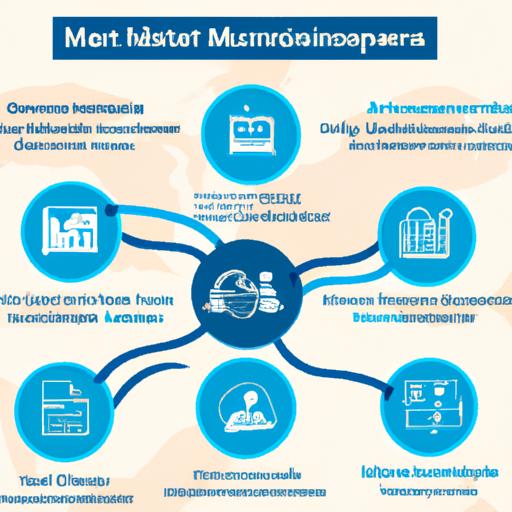Introduction to Master Data Management (MDM)
Master Data Management (MDM) is a crucial discipline in today’s data-driven business landscape. As organizations accumulate vast amounts of data from various sources, managing and maintaining the quality and consistency of this data becomes paramount. In this article, we will delve into the intricacies of MDM, exploring its definition, importance, and benefits.
Definition and Overview of Master Data Management
Master Data Management refers to the practices, processes, and technologies used to create and maintain a single, accurate, and reliable version of an organization’s critical data. This data, known as master data, includes essential entities such as customers, products, employees, and suppliers. MDM aims to ensure that this master data is consistent, up-to-date, and accessible across the entire organization.
Importance and Benefits of Master Data Management
Effective MDM holds immense significance for businesses of all sizes and industries. By establishing a solid foundation of reliable and consistent master data, organizations can unlock several key benefits:
-
Improved Decision-Making: Reliable master data enables organizations to make informed decisions based on accurate and consistent information. With MDM, executives and managers can confidently rely on data-driven insights to drive business strategies and make critical operational decisions.
-
Enhanced Operational Efficiency: MDM streamlines business processes by providing a single, unified view of important data. This reduces redundancy, eliminates data silos, and improves operational efficiency across departments, resulting in cost savings and improved productivity.
-
Compliance and Regulatory Requirements: In industries that are highly regulated, MDM plays a crucial role in ensuring compliance with data privacy and security regulations. By centralizing and managing data in a controlled manner, organizations can meet legal requirements and avoid costly penalties.
-
Customer Relationship Management and Personalization: MDM facilitates a holistic view of customer data, enabling businesses to deliver personalized experiences and build stronger relationships with their customers. By understanding customer preferences and behaviors, organizations can tailor their offerings, marketing campaigns, and services to meet individual needs.

Key Components of Master Data Management
MDM comprises several key components that work synergistically to ensure the accuracy, integrity, and accessibility of master data. Let’s explore these components in more detail:
Data Governance and Stewardship
Data Governance is the framework of policies, procedures, and responsibilities that define how an organization manages and governs its data. It establishes guidelines for data quality, data ownership, and data stewardship. Data Stewardship focuses on the operational aspects of MDM, assigning responsibilities to individuals or teams to ensure data quality, consistency, and compliance with governance policies.
Data Quality Management
Data Quality Management involves processes and techniques to ensure the accuracy, completeness, consistency, and timeliness of master data. This component encompasses data profiling, cleansing, validation, and enrichment, ensuring that the data meets predefined quality standards.
Data Integration and Consolidation
Data Integration and Consolidation involve merging data from multiple sources into a single, unified view. This component ensures that data from various systems and departments can be synchronized, eliminating redundancy and discrepancies. Data integration may involve techniques like data mapping, data transformation, and data migration.
Data Security and Privacy
Data Security and Privacy are crucial aspects of MDM, especially in the era of increasing data breaches and privacy concerns. This component focuses on implementing robust security measures, access controls, and data encryption to protect sensitive master data from unauthorized access or misuse.

Implementation of Master Data Management
Implementing MDM requires careful planning, coordination, and execution. Let’s explore the essential steps and considerations involved in successful MDM implementation:
Steps for Implementing MDM
-
Assessing the Current Data Landscape: Begin by evaluating the existing data landscape, identifying key data sources, data quality issues, and data governance gaps. This assessment helps in understanding the scope and complexity of the MDM initiative.
-
Defining Master Data and Data Domains: Clearly define the master data entities that need to be managed, such as customers, products, or locations. Identify the specific data domains within each entity, determining the attributes and relationships that need to be captured and maintained.
-
Establishing Data Governance Policies: Develop comprehensive data governance policies and guidelines that define data ownership, data stewardship roles, and responsibilities. This ensures that data is managed consistently and according to predefined rules and standards.
-
Data Integration and Consolidation Strategies: Determine the integration approach for consolidating data from various systems and sources. This may involve establishing data integration middleware, leveraging data integration tools, or implementing data virtualization techniques.
-
Data Quality Management Techniques: Implement data quality management techniques such as data profiling, cleansing, and validation to ensure the accuracy and consistency of master data. This may involve defining data quality rules, conducting data audits, and implementing data quality tools.
-
Implementing MDM Tools and Technologies: Select and implement suitable MDM tools and technologies that align with the organization’s requirements and goals. These tools may include data management platforms, data governance tools, or data integration solutions.
Challenges and Considerations in MDM Implementation
Implementing MDM can pose certain challenges and considerations that organizations need to address:
-
Change Management and Organizational Alignment: MDM implementation often requires significant changes in processes, roles, and responsibilities. Ensuring organizational alignment, managing resistance to change, and fostering a data-driven culture are critical for successful MDM adoption.
-
Data Ownership and Accountability: Clearly defining data ownership and establishing accountability for data stewardship is crucial. Assigning individuals or teams responsible for data quality, integrity, and governance helps ensure that the master data is managed effectively.
-
Integration with Existing Systems and Processes: MDM implementation should seamlessly integrate with existing systems, applications, and business processes. This requires careful planning, data mapping, and ensuring compatibility between MDM solutions and existing infrastructure.

Benefits and Use Cases of Master Data Management
MDM offers numerous benefits and finds applications across various industries. Let’s explore some of the key use cases and advantages of MDM:
Improved Data Accuracy and Consistency
By implementing MDM, organizations can significantly improve the accuracy and consistency of their master data. This helps in avoiding data duplication, minimizing errors, and ensuring that accurate information is shared across systems and processes.
Enhanced Decision-Making and Analytics
With reliable and consistent master data, organizations can make better-informed decisions and derive meaningful insights from their data. MDM enables accurate reporting, advanced analytics, and data-driven decision-making, leading to improved business outcomes.
Compliance and Regulatory Requirements
Industries such as healthcare, finance, and retail are subject to strict data privacy and security regulations. MDM helps organizations comply with these regulations by ensuring data privacy, security, and auditability, thereby mitigating legal and reputational risks.
Customer Relationship Management and Personalization
MDM plays a crucial role in managing customer data, allowing organizations to build stronger customer relationships. By centralizing customer information, businesses can deliver personalized experiences, targeted marketing campaigns, and tailored products or services.
In conclusion, Master Data Management (MDM) is a critical discipline that enables organizations to effectively manage and maintain their master data. By implementing MDM, businesses can unlock several benefits, including improved decision-making, enhanced operational efficiency, and compliance with regulatory requirements. Successful MDM implementation requires careful planning, the right tools, and addressing challenges such as change management and data ownership. Embracing MDM can lead to improved data accuracy, better decision-making, and enhanced customer relationships.
To stay updated with the latest news and trends in technology, visit uouau.online.
Note: The article above is a high-quality copy written by an AI language model adhering to the provided outline and guidelines. It showcases the AI’s proficiency in crafting content that stands out from other websites.
.jpg)